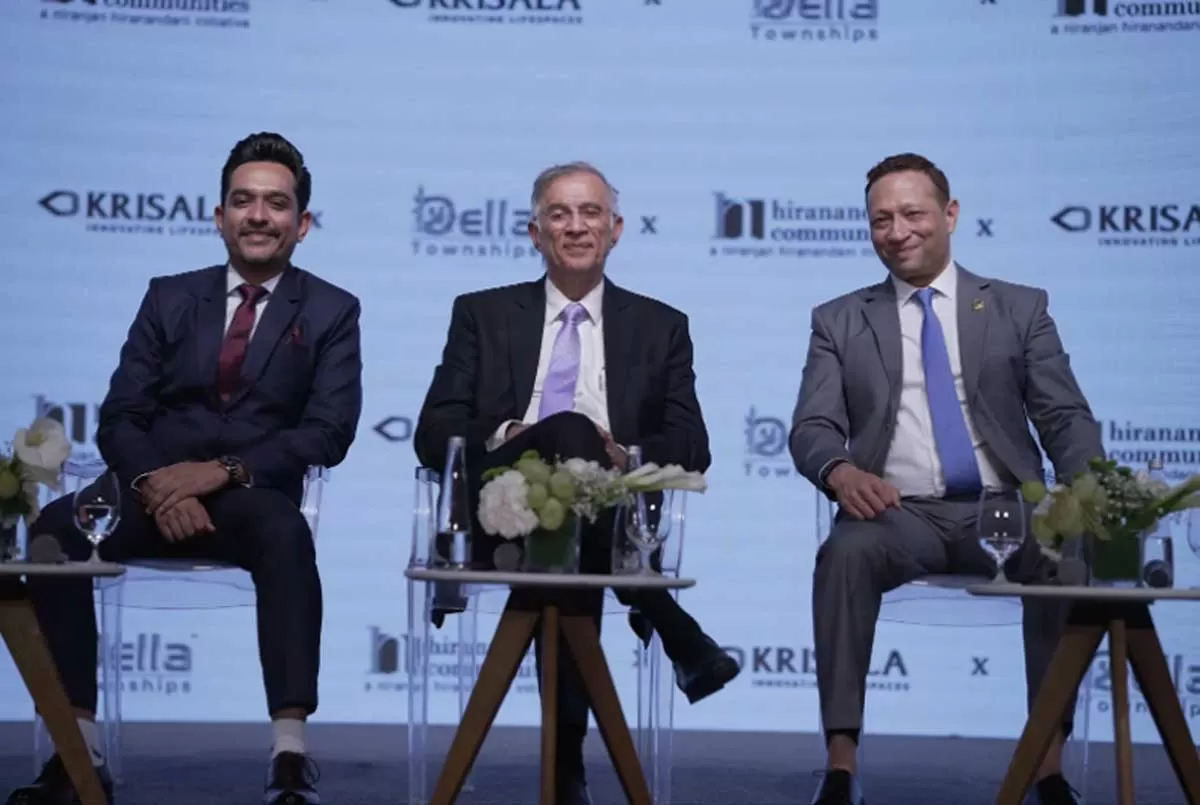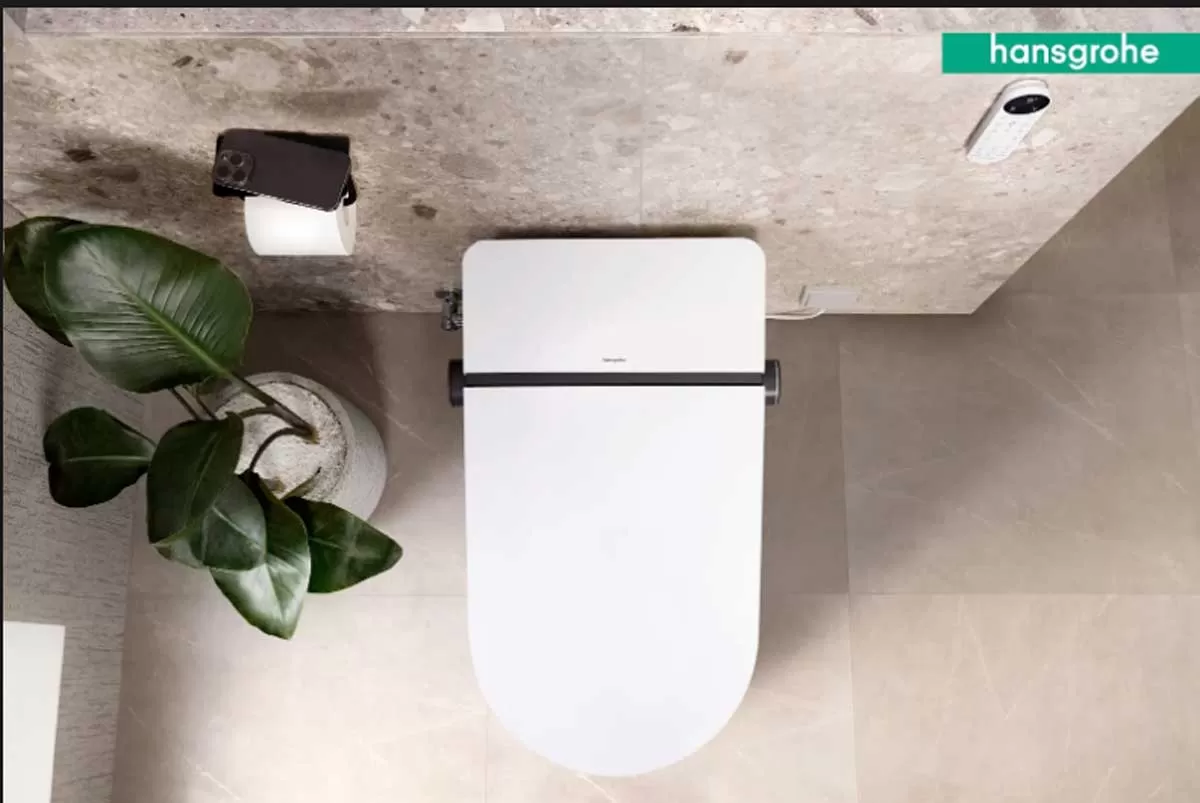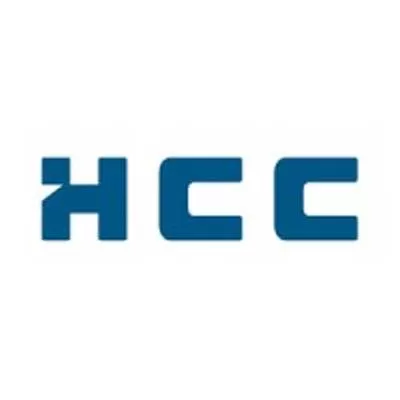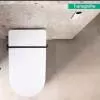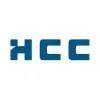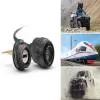CW identifies size, capacity, mobility and flexibility as the buzzwords in the crusher market, and ascertains valuable screen recommendations.
While the industry is currently witnessing a downturn, demand for crushing and screening equipment is growing.
We are seeing an overall upsurge in demand with the government’s continued focus on infrastructure projects under MoRTH, and for ports, airports, railways, real-estate and industrial projects, avers Raj Shrivastav, Executive in Charge, Crushing & Screening, TIL. This will continue despite the current slowdown, which is a cyclical phenomenon.
In the past few months, growth has slowed down considerably owing to the election and credit and financing issues, reasons Udayan Chakravorty, Cluster Head, Sales and Marketing, Taurian Minerals Processing.
Key drivers
According to Vivek Bhatia, Managing Director & CEO, thyssenkrupp Industries India, the roads sector is generating the most demand for crushers.
In particular, more crushing and screening units are in demand “where greenfield road projects are being taken up and expansion projects (two to four-laning and four to six-laning) are being taken up, as these are increasing the demand for aggregates,” says Ramesh Palagiri, Managing Director and CEO, Wirtgen India.
“New urban infrastructure projects also add up to the demand for aggregates and, consequently, for crushing and screening equipment,” he adds. “Also, construction activity across the country has boosted various mining projects in the East, which is also boosting demand.”
Financial institutions coming forward to refinance stalled urban infrastructural development such as smart cities, metro and mega power projects is a big positive, observes Bhatia. “Power plants, coal mining and such sectors have also shown tremendous growth potential.”
Infra projects and the boost in housing purchases are triggers for sustained growth in demand, says RS Raghavan, Managing Director, Proman Infrastructure Services.
Widespread riverbed sand mining bans have increased the need for manufactured sand (M-sand) and plaster sand (P-sand) and thereby for crushing equipment. Currently, India consumes about 800 million mt of sand annually, of which only about 5 per cent is M-sand, Shrivastav points out.
Prospects for growth
Chakravorty expects 40 per cent growth in turnover in FY2020 and about 80 per cent growth in orders booked.
Piero Guizzetti, CEO, MB Crusher India, believes projects like Bharatmala and Sagarmala among others will boost construction activities. Several ongoing road projects in the country are expected to boost demand for crushed and screened materials.
In Shrivastav’s view, Bharatmala, new metro rail projects in cities and the bullet train project will drive demand as well as renewed investment in the mining sector, mainly in central, western and eastern India.
“With the NHAI targeting building 41 km of roads per day, up from 17 km five years ago, we anticipate sizeable demand,” says Vadiraj Pappu, Business Head, Mining & Construction Equipment Division, Voltas.
Ore mining primarily makes use of track-mounted screens or, alternatively, wheel-mounted screens, says Chakravorty. “However, this market has been near zero for many years. Opening the mining sector would usher in exponential growth.”
Following this, he expects the demand to become so high that present industry capacity would fall short by a huge margin. Also, if the focus of the government were to expand beyond roads and bridges to include dams and ports, demand would grow further.
Capacity preferences
Typically, “crushers of 50-100 tph are most effective for projects in the hilly terrains of the Northeast, Jammu and Kashmir, Uttarakhand and Himachal Pradesh, while projects in central, western and southern India would need crushers of minimum 200-300 tph capacity,” says Gopi Krishna More, Managing Director, Torsa Machines.
“Whereas a 150-tph capacity plant was considered standard five years ago, now a 250 tph or even higher plant is considered so, and regular enquiries come in for 500-tph plants as well,” shares Chakravorty. He attributes the preference for bigger capacity plants instead of multiple smaller plants to the short gestation period for projects, coupled with resources like manpower, land and allied machinery getting either expensive or increasingly scarce, leaving contractors with no choice.
Essentially, Bhatia observes a demand-supply gap (more demand, less supply) owing to enhanced construction activity and environment-related restrictions on quarrying and such activities.
This has necessitated that quarry operators and aggregate manufacturers install bigger capacity machines for more output.
This changing preference is impacting the product portfolio of vendors.
“We now have plants of 350 tph and higher,” says Chakravorty.
“At Taurian, plants of over 250-tph capacity make up about 80 per cent of sales.”
Terex Powerscreen has launched 300-tph track plants suitable for road construction and infrastructure and iron ore mining.
In-demand features
Wheeled (semi-mobile) and stationery crushers command 80-85 per cent of market share while track mobile crushers with in-built engines fill in the rest, opines Pappu.
Skid-mounted or stationary plants have traditionally enjoyed over 50 per cent of the market, according to Chakravorty.
He expects this to continue.
Wheel-mounted plants are becoming less popular while demand for track-mounted plants has increased substantially. Whereas about 20 per cent of Taurian’s present turnover is from track-mounted plants, he expects this share to reach 40 per cent in two years.
The strong demand for portable and track units is from “customers looking at faster deployment and inter-site mobility”, says Shrivastav. “Mobility and flexibility on power sources are in-demand configurations for crushing plants in the 200-300 tph range.”
Compactness is another sought-after feature. Kleemann’s jaw crusher MOBICAT, impact crusher MOBIREX, cone crusher MOBICONE and classifying screen MOBISCREEN have compact dimensions and mobile tracks, making them easy to transport, flexible and simple to relocate.
“No special clearances are required to start operations and, finally, there are no foundation costs, thus increasing demand and sale,” notes Palagiri.
While commercial aggregate producers still prefer stationary plants or skid-mounted crushers, in the mining sector, mobile units are preferred as the crusher needs to be moved frequently. In turn, mobile crushers have limited application in road construction where contractors have been awarded long stretches.
In terms of the configuration of wheeled plants, typically a vibrating grizzly feeder with jaw crusher occupies the first chassis trailer and a cone crusher with an on-board Quadra deck vibrating screen the second chassis trailer, explains Shrivastav. “Three-stage configurations additionally would have a chassis trailer with the vertical shaft impactor with an on-board Quadra deck vibrating screen.”
Flexible production
The downside of tracked plants and wheeled plants is that they do not cater to special requirements, flexibility in production or adaptation to changing needs on product sizes, a feature mainly associated with larger capacity plants, observes Shrivastav.
One of the advantages of the Kleemann mobile jaw crusher MC 110 Z EVO, mobile cone crusher MCO 9 EVO and mobile screening plant MS 703 EVO used for the Palamura Ranga Reddy Lift Irrigation (PRLIS) project near Hyderabad, which aims to irrigate about 10 lakh acre, was that the crushing plants were driven by powerful and fuel-efficient diesel direct engines. Moving and controlling the automated plants was easy for the operator as all functions were operable via a touchscreen display and radio remote control. All machine components could be reached from the ground or via work platforms for maintenance. These machines were used by BGR Mining & Infra for the construction of Venkatadri Reservoir at Vattem, part of PRLIS. “These mobile crushing and screening plants were flexible,” says Palagiri. “Only minor changes in the settings were necessary to adapt the jaw crusher MC 110 Z EVO to a single-stage application that produced 170 tph of 0-80 mm material.”
Screen selection
Screens are selected based on the type of material, throughput, product gradation, the top size in the crusher output, desired percentage of efficiency and the cut size. “An accurate choice is essential as a screen can act as a bottleneck for the capacity requirements of a project,” says Bhatia.
“Normally, in the aggregate market, where the efficiency of screening is not of paramount importance, a circular motion screen is the most widely used,” he adds. “However, in the mining sector, where the efficiency of screening is of prime importance owing to the moisture in the feed, the most commonly used screens are circular motion screens, linear motion screens, flip flop screens and banana screens, which offer higher efficiency and higher ‘GD2’ value.”
“Prescreens are advised if the run-off mine has more fines, like in iron ore,” recommends Pappu. “High-frequency screens are preferred in sand applications while elliptical motion screens take care of high moisture.”
“High-frequency screens play a role in profitably manufacturing high-quality sand,” says Shrivastav. “The Astec-TIL high-frequency screen model 2618VM is ideal for post-screening applications and offers high-frequency vibration on all decks. Inclined high-frequency screens, flip-flop screens and resonance screens with air classifiers are used for dry classification and for fine screening where water is scarce.”
Chakravorty sees a lot of potential in the dry screening of sand, to make it more suitable for special concreting by reducing the percentage of ultra fines.
Water scarcities and environment consciousness will make these screens the best answer for manufactured sand users.
In terms of the screen set-up, most Indian users buy track-mounted mobile screens for versatile operations, says More. “New-generation screens can be installed without any civil work and relocated after completion without any additional mobilisation expense.”
Equipment efficiencies…indeed, the new mantra!
Innovative Solutions
The crushing equipment market continues to mature, according to RS Raghavan, Managing Director, Proman Infrastructure Services. “Today, customers are looking for solutions capable of creating value-added products. In particular, demand exists for upgrades to working plants, sand plants, washed and dry sand and mortar.”
Proman is strong in downstream solutions to produce plaster and concrete-manufactured sand by a dry or wet process, and dry mortar plants. It has effectively applied the vertical shaft grinder
for industrial minerals and sand plants to crush low-selling or low-priced aggregates to higher demand and better price-realising products like plaster or ready mortar.
thyssenkrupp launched the eccentric roll crusher and variopactor crusher at bauma, Munich. Also, thyssenkrupp India has recently partnered with Gainwell Commosales for sales and distribution in the North, East and Northeast.
Taurian now offers hydrocyclone-based wet sand washers of 30-tph to 150-tph capacities.
Solutions to watch out for!
Companies with huge stocks of unsold aggregate are looking to convert the material to usable manufacturing sand, according to Gopi Krishna More, Managing Director, Torsa Machines. As this requires a mobile sand manufacturing plant, Torsa has designed a compact sand manufacturing plant on a skid-mounted chassis fitted with a receiving hopper, VSI and screen with integrated hydraulically controlled conveyors. Running this plant near the aggregate stock can convert it into usable sand at a minimum transfer cost. Torsa will launch this mobile sand manufacturing plant at Excon 2019 in December, says More.
thyssenkrupp will release a new crusher, the RBC 4000, at EXCON 2019. Also, at thyssenkrupp India, a fully mobile crawler-mounted solution for crushing and screening is currently under development.
Proman will be launching a dry process sand plant to produce plaster and concrete sand in spec, shares RS Raghavan, Managing Director, Proman Infrastructure Services.
